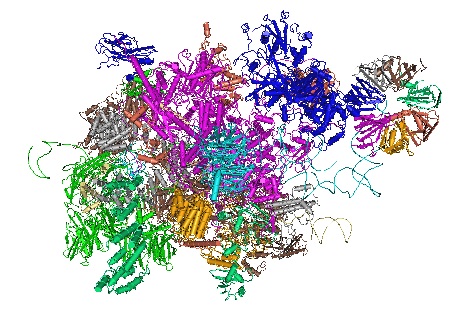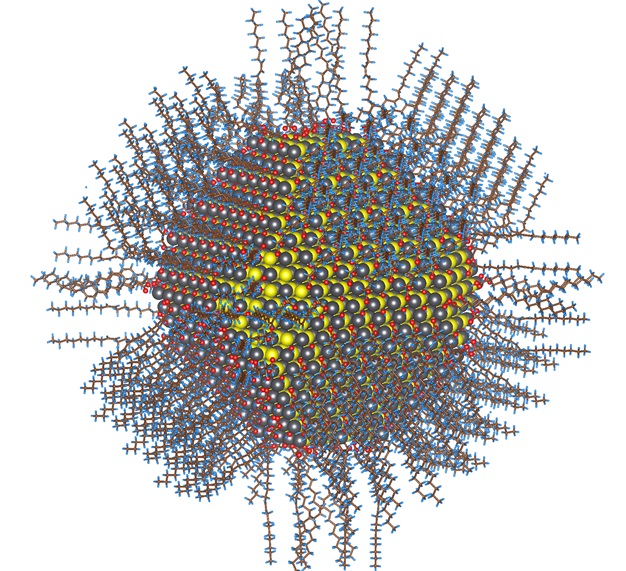|
|
|
Bio-Synthesis Newsletter - July 2018
|
Spliceosome Transcripts
 Two new methods now enable high-resolution profiling of spliceosome transcripts. The “spliceosome” refers to a series of protein-RNA complexes that gain and lose proteins as pre-mRNA is bound, the spliceosome complex is activated, and two successive transesterification steps remove an inter-exon region. One method uses affinity-purified Flag-tagged pre-mRNA-processing factor 19 (Prp19) to carry out 3’-end profiling of associated RNAs using native elongating transcript sequencing and total RNA-sequencing. In the second method activated spliceosomes were purified with the help of triple-tagged fission yeast. One sequencing library allows profiling of associated RNAs, a second library the mapping of intron 5’-ends, and a 3’-hydroxy library allows obtaining high-confidence splice sites. Hopefully, this methods enable a more concise analysis of splicing regulations soon. Two new methods now enable high-resolution profiling of spliceosome transcripts. The “spliceosome” refers to a series of protein-RNA complexes that gain and lose proteins as pre-mRNA is bound, the spliceosome complex is activated, and two successive transesterification steps remove an inter-exon region. One method uses affinity-purified Flag-tagged pre-mRNA-processing factor 19 (Prp19) to carry out 3’-end profiling of associated RNAs using native elongating transcript sequencing and total RNA-sequencing. In the second method activated spliceosomes were purified with the help of triple-tagged fission yeast. One sequencing library allows profiling of associated RNAs, a second library the mapping of intron 5’-ends, and a 3’-hydroxy library allows obtaining high-confidence splice sites. Hopefully, this methods enable a more concise analysis of splicing regulations soon.
|
|
Read More
|
|
|
CAGE or Cap Analysis Gene Expression
 Cap-analysis gene expression (CAGE) libraries allow the analysis of expressed eukaryotic capped RNAs as well as the mapping of promoter regions. CAGE allows high-throughput gene expression profiling with simultaneous identification of tissue/cell/condition-specific transcriptional start sites (TSS) as well as promoter usage. CAGE has various advantages over microarray-based expression analysis. For CAGE to work, linkers are attached to the 5’-end of a full-length enriched cDNA to introduce a recognition site for the restriction endonuclease MmeI adjacent to the 5’-end. MmeI cleaves cDNAs 18 to 20 nucleotides away from its recognition site towards the 3’-end creating a two-base overhang. Concatenated sequence tags allow high throughput sequencing after amplification. Biosynthesis Inc. offers synthetic oligonucleotides for use in CAGE protocols. Cap-analysis gene expression (CAGE) libraries allow the analysis of expressed eukaryotic capped RNAs as well as the mapping of promoter regions. CAGE allows high-throughput gene expression profiling with simultaneous identification of tissue/cell/condition-specific transcriptional start sites (TSS) as well as promoter usage. CAGE has various advantages over microarray-based expression analysis. For CAGE to work, linkers are attached to the 5’-end of a full-length enriched cDNA to introduce a recognition site for the restriction endonuclease MmeI adjacent to the 5’-end. MmeI cleaves cDNAs 18 to 20 nucleotides away from its recognition site towards the 3’-end creating a two-base overhang. Concatenated sequence tags allow high throughput sequencing after amplification. Biosynthesis Inc. offers synthetic oligonucleotides for use in CAGE protocols.
|
|
Read More
|
|
|
Vitamin C and Cancer
![Vitamin C[0]](https://www.biosyn.com/Newsletters/images/Vitamin-C1.jpg) Vitamin C is essential for humans, needed for skin integrity, wound healing, induced pluripotent stem cell/embryonic stem cell (iPSC/ESC) reprogramming and the suppression of leukemia. Vitamin C also protectects humans against scurvy. Vitamin C is an oxidant and a cofactor for iron and α-ketoglutarate-dependent dioxygenases (Fe2+/α-KGDDs). Vitamin C enhances epigenetic reprogramming in fibroblasts to induced pluripotent stem cells (iPSCs), and maintains the pluripotency of embryonic stem cells (ESCs) by regulating the activity of Jumonji C (JmjC) domain-containing histone demethylases and ten-eleven translocation (TET) hydroxylases. Vitamin C is needed for the activity of collagen prolyl hydroxylases that regulate collagen synthesis. Also, vitamin C protects hematopoietic stem cells from epigenetic alterations that drive leukemia progression. In addition, vitamin C modulates the epigenome and has therapeutic benefits. Modern molecular methods can be used to study the effects of vitamin C in cells at the molecular level. Vitamin C is essential for humans, needed for skin integrity, wound healing, induced pluripotent stem cell/embryonic stem cell (iPSC/ESC) reprogramming and the suppression of leukemia. Vitamin C also protectects humans against scurvy. Vitamin C is an oxidant and a cofactor for iron and α-ketoglutarate-dependent dioxygenases (Fe2+/α-KGDDs). Vitamin C enhances epigenetic reprogramming in fibroblasts to induced pluripotent stem cells (iPSCs), and maintains the pluripotency of embryonic stem cells (ESCs) by regulating the activity of Jumonji C (JmjC) domain-containing histone demethylases and ten-eleven translocation (TET) hydroxylases. Vitamin C is needed for the activity of collagen prolyl hydroxylases that regulate collagen synthesis. Also, vitamin C protects hematopoietic stem cells from epigenetic alterations that drive leukemia progression. In addition, vitamin C modulates the epigenome and has therapeutic benefits. Modern molecular methods can be used to study the effects of vitamin C in cells at the molecular level.
|
|
Read More
|
|
|
Oligo quantum dots for in situ hybridization
 Quantum dots (QDs), also known as fluorescent semiconductor nanocrystals, are powerful fluorescent probes useful for a wide range of biological imaging applications. Quantum dots are low dimensional quantum structures that restrict or confine the motion of an electron in all three dimensions. Quantum dots exhibit bright fluorescence with an ultrasharp light emisson peak. QDs are resistant to photobleaching, and simplify multicolor target detection. QDs for labeling or conjugation are available from Biosynthesis Inc. in different wavelengths at 525, 545, 565, 605, 655, 705, and 800 nm. Quantum dots can also be coated with streptavidin to bind short biotinylated oligonucleotides useful for a single-step hybridization protocol. QD-FISH probes penetrate both intact interphase nuclei and metaphase chromosomes and also target dense chromatin domains. Alternatively, functionalization using various functional groups is also possible for QDs. The broad absorption spectra of QDs allows the design of two sequence-specific QD-FISH probes of different colors for simultaneouse imaging using a single laser excitation wavelength. This method is easily expandable to increase imaging flexibility in multicolor cytogenetic FISH applications, for example, for the study of repetitive DNA, or for the design of mono- and polyvalent targeting and sensing probes. Quantum dots (QDs), also known as fluorescent semiconductor nanocrystals, are powerful fluorescent probes useful for a wide range of biological imaging applications. Quantum dots are low dimensional quantum structures that restrict or confine the motion of an electron in all three dimensions. Quantum dots exhibit bright fluorescence with an ultrasharp light emisson peak. QDs are resistant to photobleaching, and simplify multicolor target detection. QDs for labeling or conjugation are available from Biosynthesis Inc. in different wavelengths at 525, 545, 565, 605, 655, 705, and 800 nm. Quantum dots can also be coated with streptavidin to bind short biotinylated oligonucleotides useful for a single-step hybridization protocol. QD-FISH probes penetrate both intact interphase nuclei and metaphase chromosomes and also target dense chromatin domains. Alternatively, functionalization using various functional groups is also possible for QDs. The broad absorption spectra of QDs allows the design of two sequence-specific QD-FISH probes of different colors for simultaneouse imaging using a single laser excitation wavelength. This method is easily expandable to increase imaging flexibility in multicolor cytogenetic FISH applications, for example, for the study of repetitive DNA, or for the design of mono- and polyvalent targeting and sensing probes.
|
|
Read More
|
|
|
|
|
Bio-Synthesis, Inc.
800 Mario Court, Lewisville, TX 75057, USA
Toll Free: 800.227.0627 | 1.972.420.8505 (Intl.)
|
|
|
|
|
|